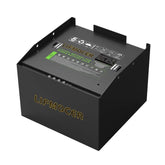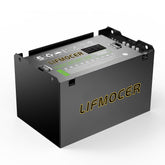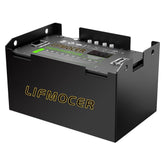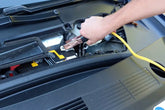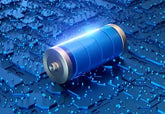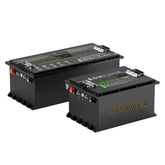How To Jump start a Car With Cables?
We’ve all been there — you turn the key, and nothing happens. No click, no engine roar, just that dead silence that makes your stomach drop. Trust me, it doesn’t always mean your car is doomed. Most of the time, it’s just a dead battery.Knowing how to jump start a car with cables is one of those basic life skills every driver should have. It can save you from being stranded on a cold morning, or waiting hours for roadside assistance. The difficulty in starting a vehicle isn't in the strength or the tools, but in the order in which you connect the wires.Get that right, and your car will purr back to life in minutes. Get it wrong, and well… you might see sparks, smell something funny, and wish you’d read this guide first.
What You Need Before You Jump Start Car
Before you pop the hood and start connecting anything, let’s make sure you’ve got the right gear. I’ve seen plenty of people grab some thin, rusty cables from the trunk and wonder why nothing happens — don’t be that person.
Here’s what you actually need:
Two vehicles: One with a working battery (your helper car) and one that’s dead.
A good pair of jumper cables: Go for cables that are thick and heavy-duty. Thicker wires carry more current and don’t overheat as easily. I’ve seen cheap ones melt under load — and that’s not a fun smell.
A safe place to work: Park both cars close enough for the jump start cables to reach, but not touching each other. Keep the area well-ventilated and away from traffic.
Some people ask me if cable length matters. Yes, it does. Longer cables are convenient, but the voltage drop can make the jump weaker — so I’d say around 12 to 16 feet is the sweet spot.
And before we move on — double-check that both cars are turned off, keys removed, and parking brakes engaged. This step sounds obvious, but it’s where most people mess up.

Safety First — What Most People Forget
Now, let’s talk safety. Jump starting a car isn’t complicated, but it can get dangerous if you skip the basics. I’ve seen people create more fireworks under the hood than on the 4th of July — all because they didn’t respect the order or didn’t know where to clamp that last cable.
First thing’s first: don’t ever let the metal clamps touch each other once the cables are connected. That’s a guaranteed short circuit, and trust me, the sparks are real.
And here’s the big one — never connect the last black (negative) cable to the dead battery’s negative post. People on Reddit argue about this all the time, and I get it — it feels logical to go “negative to negative,” right? But the problem is that when you do that, you can create a spark right next to the dead battery. Batteries release hydrogen gas, and if that gas ignites… well, let’s just say I’ve seen the aftermath, and you don’t want to.
Instead, connect that last negative clamp to an unpainted metal surface on the engine block or frame of the dead car. That way, any spark happens away from the battery, where it’s safe.
Before you do anything, also check the battery terminals for corrosion — that white, crusty stuff that looks like dried toothpaste. It can block current flow, so scrape it off gently with a brush or even an old toothbrush if that’s all you’ve got. Treat electricity with respect. It’s not trying to kill you, but it definitely can if you get careless.
Step-by-Step: How to Connect Jumper Cables the Right Way
Alright, now comes the part that actually makes your car come back to life: connecting the jumper cables in the right order. Follow jump start cable order carefully — it’s the difference between a successful jump and a room full of sparks.
Here’s my go-to method, step by step:
- Red to dead: Clip the red (positive) cable to the positive terminal (+) of the dead battery. Make sure it’s snug and clean — a loose connection here will prevent any current flow.
- Red to donor: Take the other red clamp and connect it to the positive terminal (+) of the good battery in your helper car. Again, make it solid.
- Black to donor: Now grab the black (negative) cable and attach it to the negative terminal (–) of the good battery. Simple enough.
- Black to metal: Here’s the step most newbies get wrong. Instead of connecting the final black clamp to the dead battery’s negative terminal, attach it to an unpainted metal part of the engine block or frame on the dead car. This grounds the circuit safely and keeps sparks away from the battery itself.
People on Reddit love debating this last step. Some argue, “I always hook it to the battery and it works fine.” Sure, maybe it will — until it doesn’t. That little spark near hydrogen gas can cause serious trouble, and I’ve seen it happen. Trust me, go metal.
A few extra tips from my own experience:
- Make sure the clamps are not touching any moving parts like belts or fans.
- Double-check that the cables are routed safely, away from hot engine surfaces.
- Don’t let the clamps dangle — hold them firmly while connecting.
Once you’ve got everything clipped in this order, you’re ready for the next step: firing up the cars. And yes, the order really matters — don’t skip it, even if you’re impatient.
Jump Starting the Car
Alright, with the jump start car cables connected correctly, it’s time to bring your car back to life. First, start the car with the good battery — your “donor” car. Let it idle for about two to three minutes. This gives the dead battery a small boost of charge before you even try to crank it.
Next, turn the key on the car with the dead battery. If it starts right away, fantastic! If not, don’t panic. Wait another minute or two and try again. Here’s a pro tip: don’t crank the engine continuously for more than 10 seconds. That can overheat your starter and cause more trouble than you started with.
Some folks on Quora ask, “Do I need to rev the donor car or just leave it idle?” In most cases, idle is enough, especially if your jump start car cables are good quality and the battery isn’t completely dead. If your battery is extremely drained, giving the donor car a little more revs (1,500–2,000 RPM) can help push more current, but it’s rarely necessary.
If the car still won’t start after a few attempts, the battery might be beyond a simple jump, or there could be an issue with your alternator or corrosion on the terminals. At that point, it’s better to call for professional help or use a portable jump starter rather than risk frying electronics with repeated attempts.
Once your car fires up, leave both engines running for at least five minutes before disconnecting the cables. This ensures enough current flows into the dead battery to keep it from immediately dying again.
How to Disconnect Jumper Cables
Now that your car is running, it’s tempting to just yank those cables off and hit the road. Don’t do it. Disconnecting in the wrong order is where most people make mistakes and create sparks — or worse, damage electronics.
Here’s the safe sequence I always follow:
- Black clamp from the metal surface on the dead car — remember, this is the one that went to the engine block, not the battery.
- Black clamp from the donor battery — remove it carefully, making sure it doesn’t touch anything metal.
- Red clamp from the donor battery — again, check it’s not touching anything else.
- Red clamp from the dead car’s positive terminal — last one off, and now you’re safe.
A few tips from years of doing this:
- Keep the clamps from touching each other as you remove them.
- Don’t try to remove them while the engines are off, especially on older cars — a little current is still flowing.
- Make sure the cables are neatly coiled and away from moving parts before storing them back in the trunk.
Reddit users often ask, “What happens if I remove the black clamp from the dead battery first?” The answer: sparks. Small sparks might not be catastrophic, but they can easily ignite residual hydrogen gas — and that’s exactly what the last black-to-metal step is designed to prevent.
Following this order isn’t just pedantic — it’s what separates a smooth jump-start from a trip to the mechanic with fried electronics.
After the Jump: Let It Run
Congrats — your car is alive again! But don’t just shut the hood and drive off. After a jump start, it’s important to give the battery a chance to recharge properly. I usually tell people to let the car run for at least 15–30 minutes. This allows the alternator to restore enough charge to keep the car running without dying again at the next stop.
Some folks on Quora ask, “Do I need to drive around or just let it idle?” Both work, but I prefer a short drive if possible. Even a 10–15 minute drive at normal speed puts more energy into the battery than idling alone. Plus, it helps circulate fluids and warms up the engine after being off — two birds, one stone.
Also, keep an eye on the dashboard. If your battery warning light stays on or the car dies again shortly after, that’s a sign of a deeper issue — maybe a failing alternator, a battery that’s near the end of its life, or corroded terminals. At that point, it’s better to have it checked by a professional rather than risk another jump start that might not work.
Pro Tips from a Mechanic
Over the years, I’ve learned a few tricks that make jump starting a car safer, faster, and less stressful. Here are my go-to tips:
Keep your battery terminals clean. Corrosion can block current flow, making even the best jump start battery cables useless. A quick scrape with a wire brush or an old toothbrush can make a huge difference.
Invest in quality jumper cables. Thick, heavy-duty cables with strong clamps are worth every penny. I’ve seen cheap cables overheat or snap mid-jump — not fun.
Use a portable jump starter if you can,such as LIFMOCER jump starter.I carry one in my truck all the time. No second car needed, no awkward parking situations, and it’s way faster than relying on a stranger.
Check for manufacturer jump-start points. Some modern cars have dedicated positive and negative terminals under the hood. Using these ensures you’re following the car’s safety design.
Stay calm and follow the order. Even a small spark can happen if you rush. I always remind people: take your time, double-check the clamps, and breathe.
Reddit users often debate these points, especially about cable quality and grounding spots. Trust me, these aren’t just preferences — they’re practical solutions learned from hundreds of real-world jump starts. Follow these tips, and you’ll avoid most of the mistakes I’ve seen drivers make over the years.

Common Mistakes to Avoid
Even with all the instructions, people still mess up jump starting a car. Over the years, I’ve seen a few mistakes more than I care to count — and I want you to avoid them:
- Mixing up the red and black clamps. This is the most common blunder. Positive to negative? Big sparks, fried electronics, or even a blown fuse. Always double-check the color and terminal.
- Removing clamps in the wrong order. Pulling off the cables without following the safe sequence can cause sparks or damage to the car’s electrical system. Remember: black from metal first, red last.
- Using thin, cheap cables. If the wires can’t handle the current, they can overheat, melt, or fail to deliver enough power to start the car. Quality cables are non-negotiable.
- Cranking the dead car for too long. A short burst of 5–10 seconds is enough. If it doesn’t start, wait a minute and try again. Continuous cranking can burn out the starter motor.
- Ignoring battery health. If your battery is leaking, swollen, or near the end of its life, no amount of jumping will fix it — and attempting a jump could be dangerous.
These are mistakes I see discussed repeatedly on Reddit and Quora. The key takeaway? Take your time, respect the process, and treat your car’s battery with care. A calm, methodical approach is far safer than rushing because you’re late for work.
FAQs
Q: Can jump-starting damage my car’s electronics?
A: If you connect the cables in the correct order, jump-starting is generally safe. The biggest risk comes from reversing the clamps, which can send a surge through your car’s electronics. Always double-check red to positive, black to metal.
Q: How long should I leave the cables connected?
A: Connect the cables and let the donor car idle for 2–3 minutes before starting the dead car. Once it starts, keep both engines running for at least 5 minutes to give the dead battery enough charge.
Q: Why does my car die again after jump-starting?
A: This usually indicates a weak or old battery, or an alternator that isn’t charging properly. A jump start only gives a temporary boost; if the car dies again, you’ll need to replace the battery or check the charging system.
Q: What if I connect the cables in the wrong order?
A: Stop immediately and disconnect carefully in reverse order. Check for sparks or smoke. If there’s any burning smell, don’t try again — call a professional. Reversing polarity can damage electronics quickly.


